Another morning
Monday, 22 December 2025
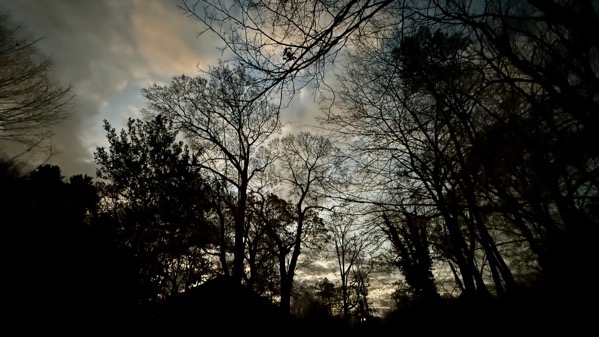
I’m enjoying the sky just before the sun rises.
Wednesday, 17 December 2025
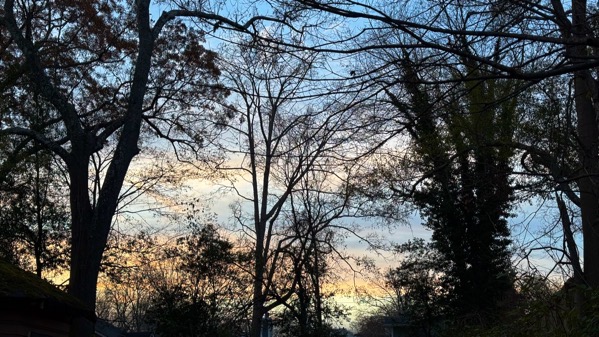
I’m feeling the approaching solstice…this dawn-ish sky arrived late.
Sunday, 14 December 2025
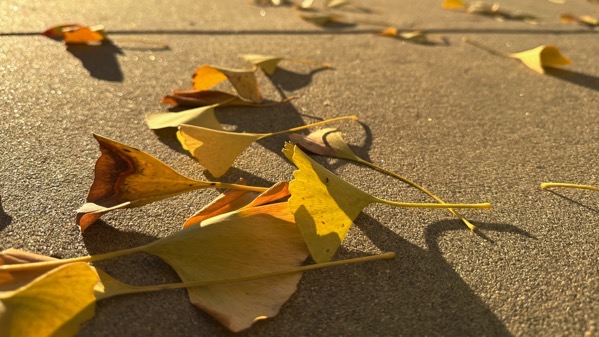
This was our day…wind blowing leaves around and dusting the sidewalks with acorns, too.
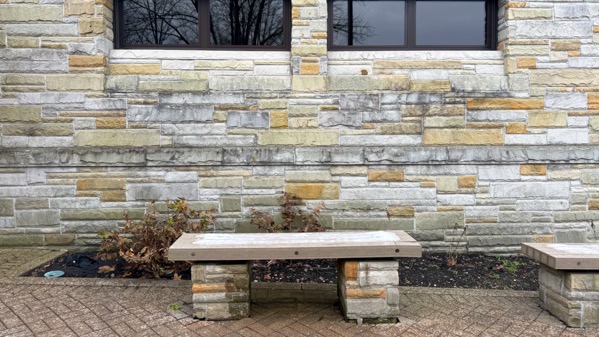
Here’s an iced stone bench at the Canyon Rim Visitor Center at the New River Gorge last week. It is representing (suggesting? hinting at?) the cold predicted for us for the next few days. A low of 21°F is expected tomorrow morning, even colder with the wind chill. That’s brr, but brrrrrrrrrrr for ATL.
Wednesday, 10 December 2025
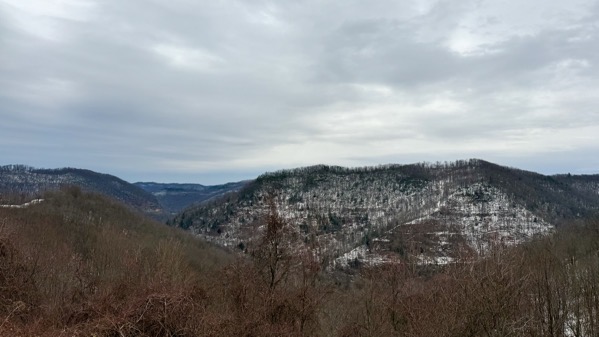
I find it always special when I’m rolling along a mountain road and find a pull-off vista-view. Here’s one…
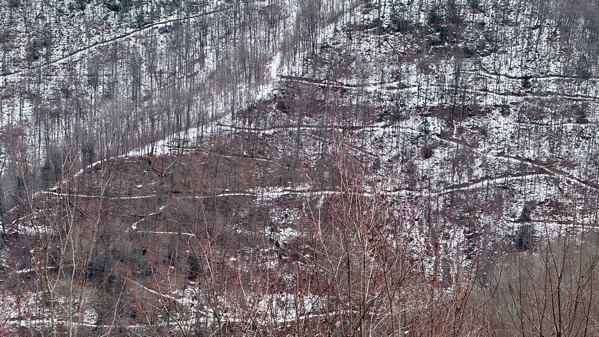
…with snow outlining every little trail and logging road. This is a close-up of that “triangle” on the right side above.
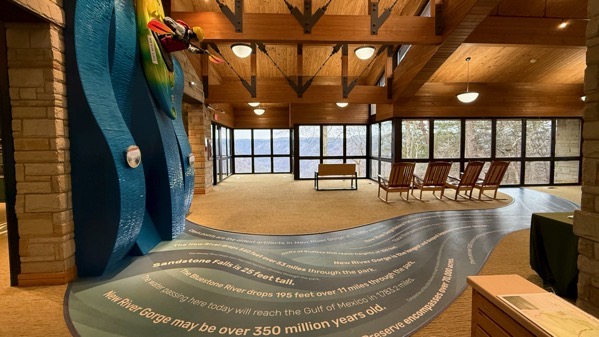
Our tourist stop of the day was at (one part of) New River Gorge National Park and Preserve, in West Virginia. We first saw the gorge from these windows in the Canyon Rim Visitor Center.

Truly a gorgeous gorge—even with rain starting to fall.

Here’s the high bridge crossing the gorge…
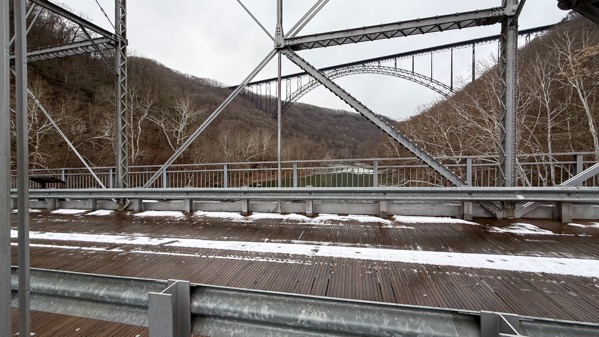
…and here’s the high bridge from the low bridge, which is the one we crossed.
The rest of the day was rain, never a blinding storm, but constant, mile after mile. We hear that we may awaken to snow tomorrow here in Asheville, despite being so much farther south than the southern Lake Erie shore.
Tuesday, 9 December 2025
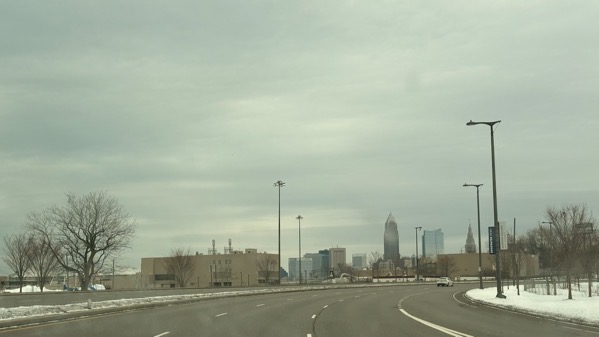
We motored east sometimes close to Lake Erie, sometimes a few miles inland, and finally saw Cleveland in the distance.
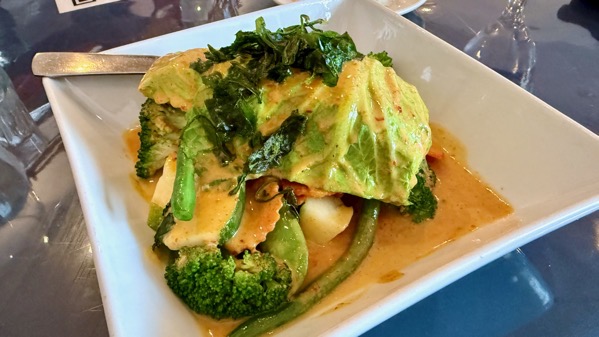
Over on the east side, we met up with a college buddy of The Guru at a lovely Thai restaurant. My dish: Siam salmon…salmon wrapped in a napa cabbage leaf with veg and a rich yellow curry sauce. Oh, just yum. Perfect. Thanks, FK.

We continued east, still under the lake effect smear, and, while in Amish territory dodging horse-drawn buggies, spotted this pair of planes that looked to me as if they were slowly degrading. I did not see a for-sale sign.
Then we turned south, and outran the snow-smear, and are now on the PA side of the OH/PA line, enjoying temps just a smidge above freezing. We understand that a winter storm is headed this way tomorrow. Hopefully, we’ll be out of here before it ramps up.
Friday, 5 December 2025
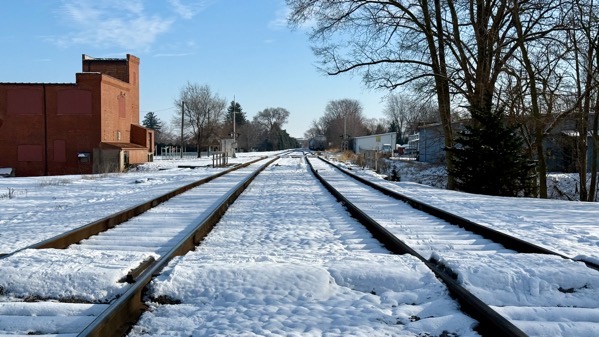
Northern Ohio is criss-crossed (sorta; more east-west than other directions) by train trax. Here’s a parallel pair.
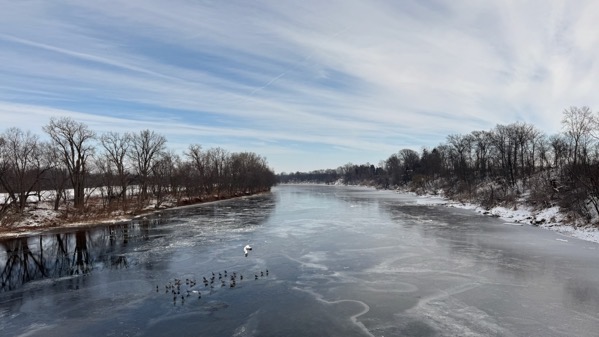
You may not know the Maumee, but it’s a major river in NE Ohio. Note the geese STANDING on the ice on the river.
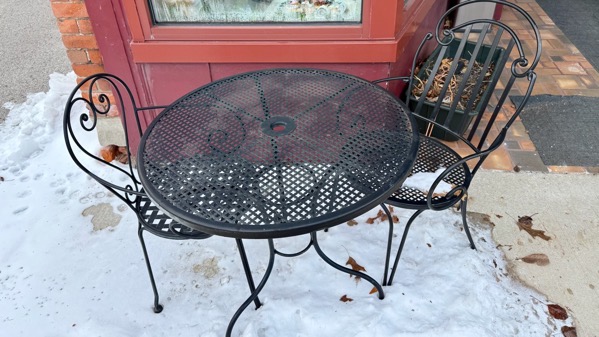
We stopped for lunch at a…unique…luncheree, shall we say, although we ate inside where it was not quite freezing, and not at this table.
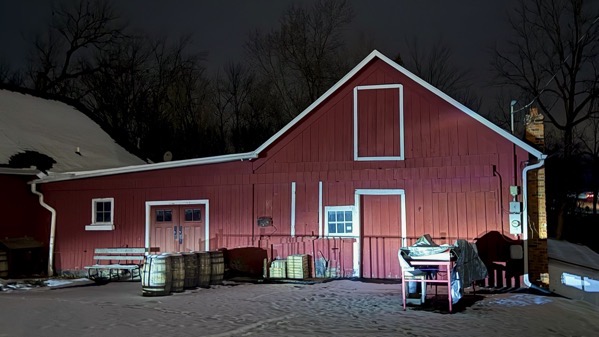
We ate this evening near this cider mill that I visited every fall when I was a kid and into my teens. I think in those days the only building was the part on the right. Inside, it reeked of fresh apple juice, and I thought the smell emanated from the beams and walls, and not just the mill, because the odor was so intense. On warm days, I remember worrying about the buzzing hornets/yellow jackets/whatever attracted by the apple-sugar.
Thursday, 4 December 2025
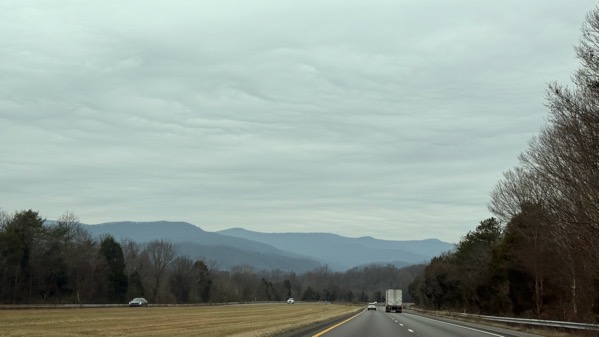
Sometimes the wild blue yonder is really shades of blue, or perhaps grey-blue if you’re picky.
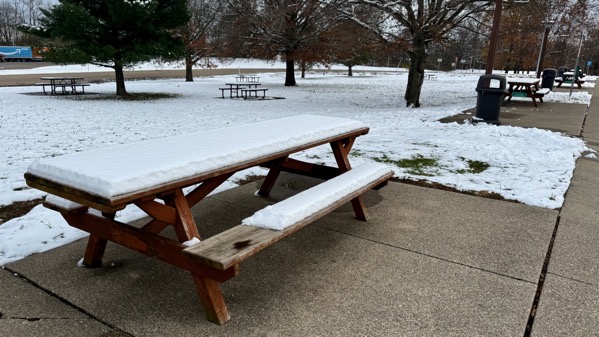
We’re northbound, after a snow-storm, which is a better time than during the storm. Duh. This is a northern Kentucky rest area.
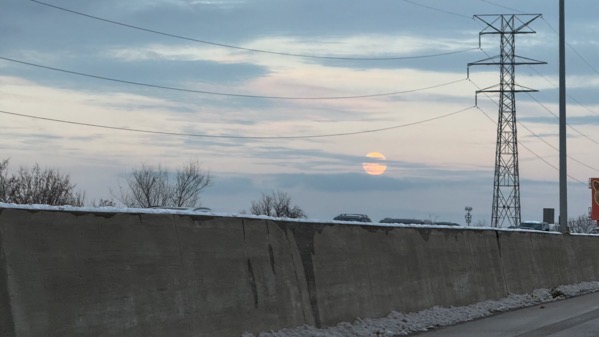
Full moon rising over Cincinnati.
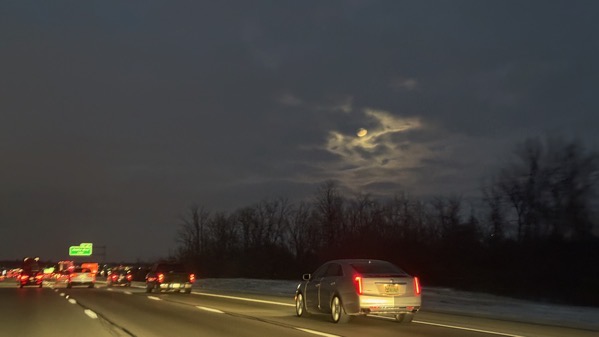
And, by the time we got to the outer Cincinnati suburbs: demurely hiding moon. If anthropomorphizing is permitted.
We did see about five minutes of wan sunshine, and a few minutes of snow blowing across the pavement, but otherwise: dry roads, yay.
Wednesday, 26 November 2025
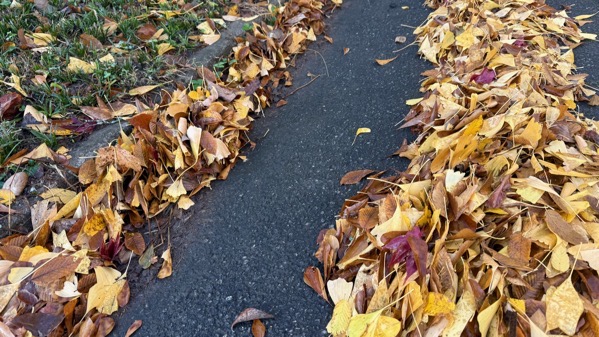
I saw this rain-shower aftermath and thought: ginkgo dry wash. Still think that (even though other leaves are mixed in).
Monday, 24 November 2025
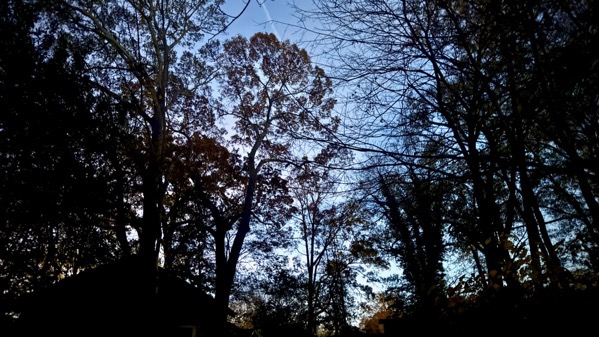
To my eyes, it was far darker than this—after all, it was 6:30am, and sunrise didn’t happen (technically) much later, until 7:19am. My eye keeps being drawn to the contrail beautifully framed in the tree-opening.
Sunday, 23 November 2025
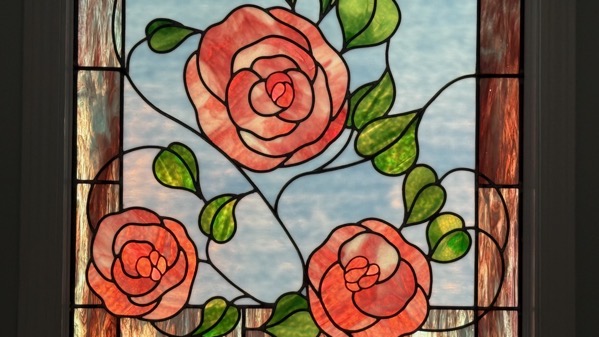
We’re just a month before the shortest day of the year, and the sun angle now catches this stained glass window, which is in an interior stairwell. Is that a strange location?